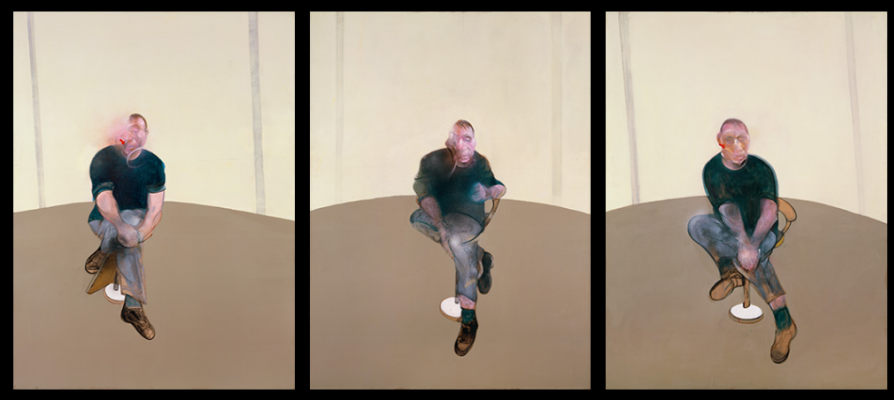Triptych self portrait sketch
Description of the artwork «Triptych self portrait sketch»
Francis Bacon created disturbing and frightening images based on transformations of the human face and body. His favorite topics are screaming, suffering, loss of death. The characteristic form is the triptych. Finished paintings Bacon often called "sketches" or "sketches."
... In 1963, Bacon met with George Dyer. Given that Bacon was rarely sober, and also recall that homosexuality ceased to be considered a criminal offense in England only in 1967, it is easy to imagine how emotional chaos accompanied his novels. Stormy quarrels and reconciliations, betrayals and remorse, generous gestures and unrestrained promises: with the exception of the very fleeting, all of Bacon’s relations were plus or minus such. What distinguished George Dyer from most of his lovers was that Bacon really loved him. The feeling was strong and mutual.
In the past, an amateur boxer, he seemed to Bacon the embodiment of the simplicity, immediacy and innocence that are characteristic of immigrants from the poor East End. The fact that Dyer was prone to depression, paranoia and all kinds of psychoses (among other things, he had serious problems with heroin) did not bother him at all.
For eight years, George Dyer was Bacon's muse and his constant companion - in alcoholic odysseys, all-night vigils at roulette, at social (or not too) events. Then Dyer committed suicide.
After the death of his lover, Francis Bacon began to write self-portraits more often. To the question “why?” he replied: "My friends are dying like flies; I have no one else to draw."
Biographical sketch about the artistin arthive


